The Mazda MX-5, also known as the Miata (the first series was sold with this name in North America), is an iconic roadster renowned for its mechanical simplicity, balance, and engaging driving dynamics. This lightweight sports car’s engineering is a testament to Mazda’s commitment to the philosophy of “Jinba Ittai,” which translates to “horse and rider as one.” This is basically the idea behind the centaur and, as a matter of fact, driving a Miata is the closest 4-wheeled experience you can get to motorcycle riding. With the plus that you don’t need a helmet!
Suspension
The suspension system of the Mazda MX-5 is a key contributor to its fantastic handling. The first and second MX-5 series (NA and NB) featured a double-wishbone suspension at the front and rear. Such a solution provides superior camber control, allowing the tires to maintain optimal contact with the road surface during cornering. In 1989 you had to buy a Ferrari to get a similar layout and even nowadays it is a used only on supercars.
From the NC series (2005), the rear double wishbone was replaced by a sophisticated 5-arm multi-link suspension to ensure an even better mix between stability and agility, offering the perfect blend of precision and compliance.
The suspension’s tuning strikes a balance between comfort and sportiness, making the MX-5 suitable for daily driving and spirited cornering alike. Plus, Mazda employs lightweight components in the suspension system to reduce unsprung weight, enhancing responsiveness and ride quality.
Chassis
The chassis of the Mazda MX-5 is a masterpiece of lightweight engineering. Mazda’s engineers prioritized weight reduction without compromising rigidity. The result is both light and strong, forming the foundation of the car’s exceptional handling characteristics.
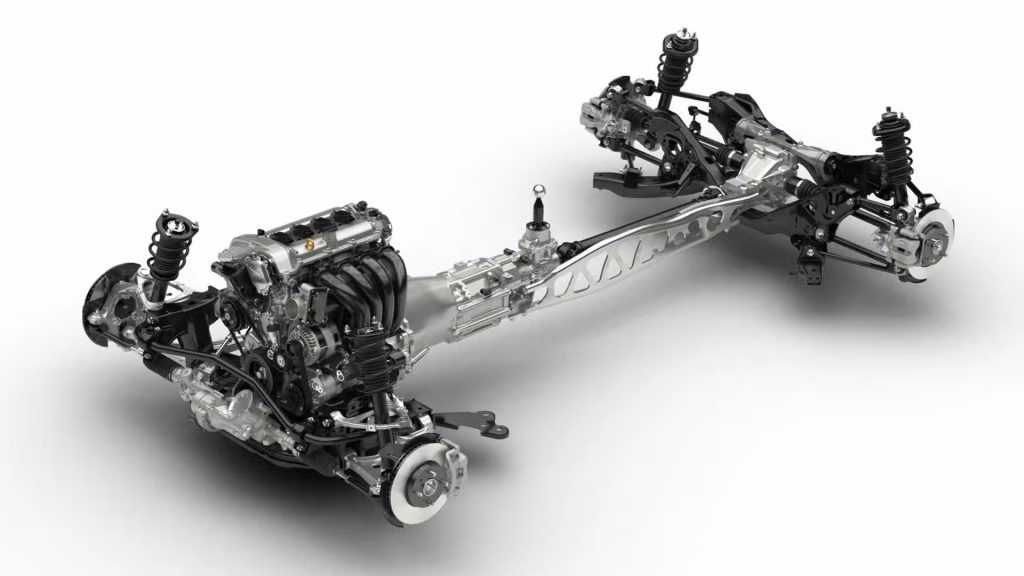
High-strength steel and aluminum are used strategically throughout the chassis to optimize weight distribution and structural integrity. The MX-5’s unibody design incorporates advanced welding techniques to enhance torsional rigidity, which is crucial for sharp handling and a stable ride.
The chassis’s geometry is designed to lower the car’s center of gravity, contributing to its nimble handling. Furthermore, the MX-5 features a near 50:50 front-to-rear weight distribution, achieved through careful placement of components and an emphasis on lightweight construction. This balance ensures predictable and responsive handling, making the car feel like an extension of the driver.
Balance and Weight Distribution
One of the defining traits of the Mazda MX-5 is its near-perfect balance. Achieving a 50:50 weight distribution was a primary goal for Mazda’s engineers, as it is crucial for achieving neutral handling and predictable dynamics.
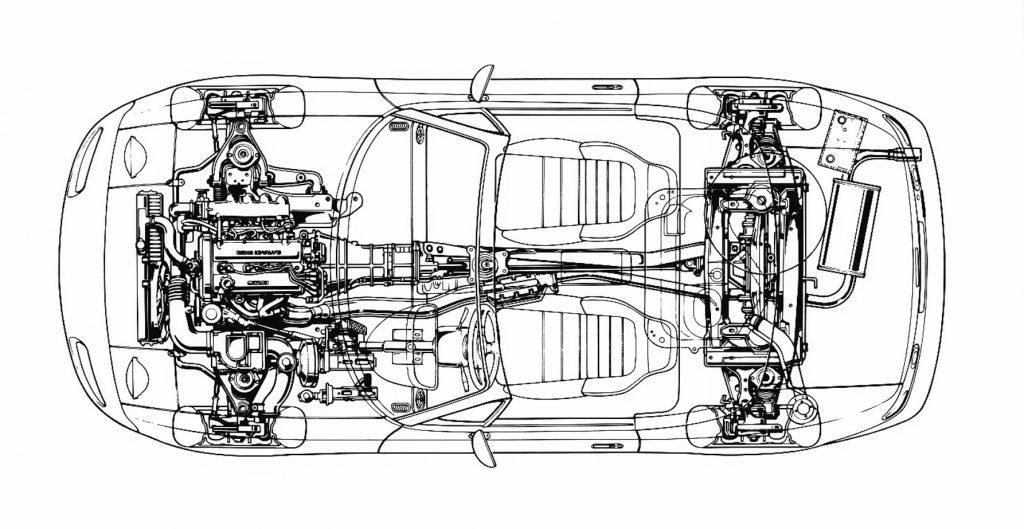
This balance is achieved through meticulous engineering. In the NA and NB series, the battery is located in the trunk. In the NC and ND series the engine is moved further behind the front axle, making the MX-5 a front-mid-engine car. Lightweight materials are used extensively to reduce mass and optimize weight placement. These measures ensure that the car remains stable and composed, whether navigating tight corners or cruising on a straight road.
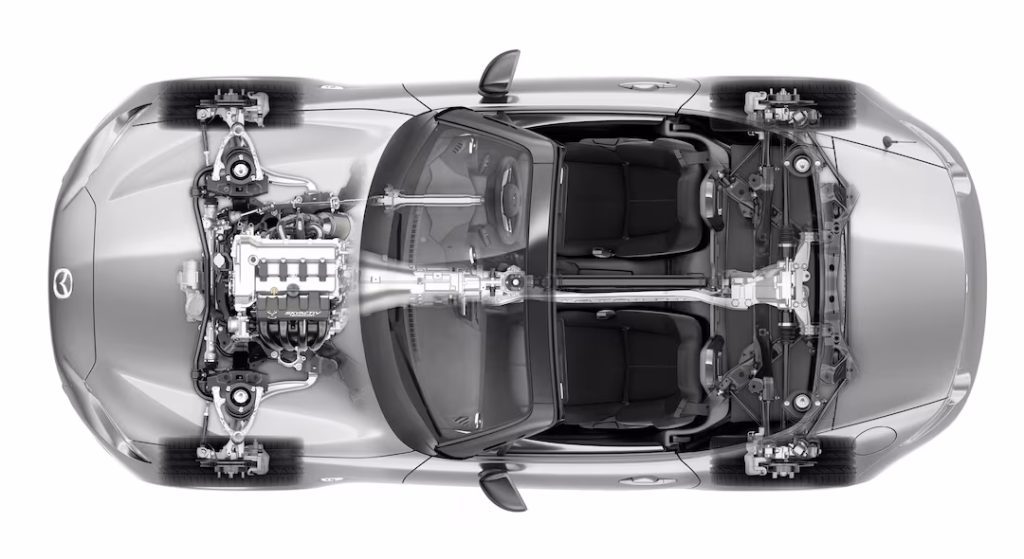
The MX-5’s lightweight construction also plays a significant role in its balance. With a curb weight ranging from 960 kg (2116 lb, NA series) to 1,176 kg (2593 lb, NC), the car is one of the lightest sports cars on the market. This low weight enhances agility, braking performance, and fuel efficiency, all while contributing to the car’s playful and responsive nature.
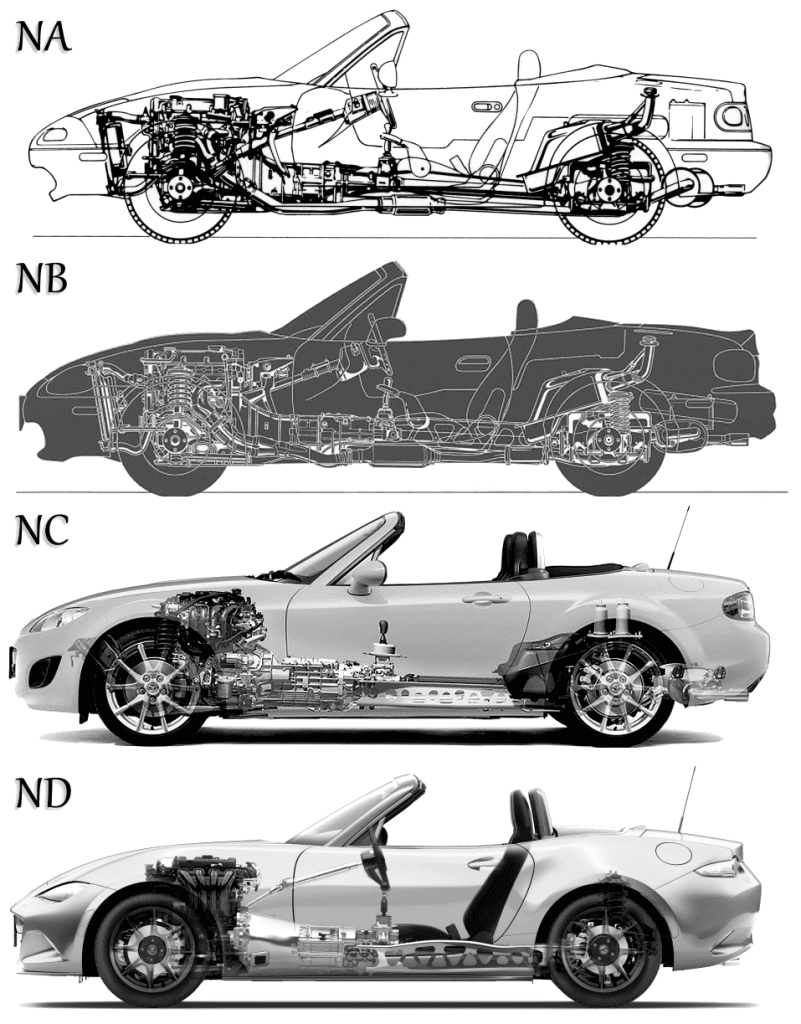
Engine
The heart of the Mazda MX-5 is its engine, a powerplant designed to deliver an exhilarating driving experience. Since the beginning, all engines have been natural aspirated, high-revving DOHC inline-four equipped with fuel injection. The NA and NB series NA sport Mazda 1.6- and 1.8-liter engines, the NC series is equipped with Ford 1.8- and 2.0-liter engines, the ND is powered by a new generation Mazda 1.5- and 2.0-liter.
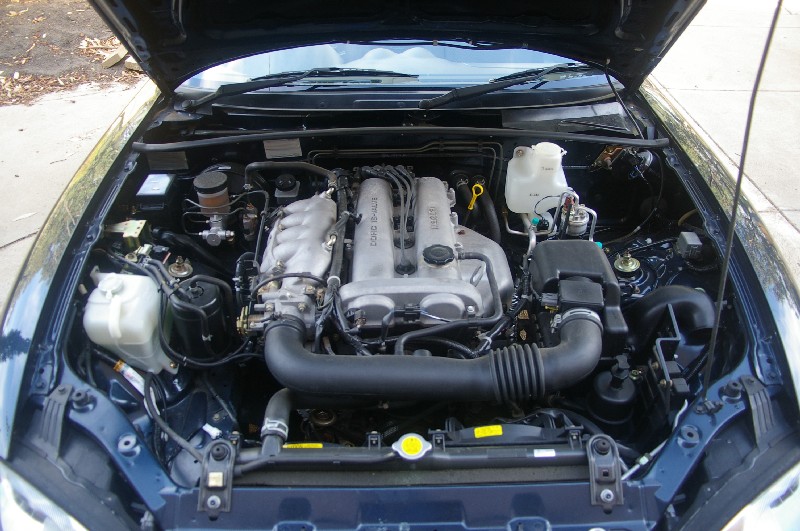
The power ranges from 115 to 184 horsepower, offering plenty of performance for the lightweight roadster. While these figures may seem modest compared to bigger-displacement and turbocharged competitors, but the MX-5’s power-to-weight ratio ensures lively acceleration and an engaging driving experience.
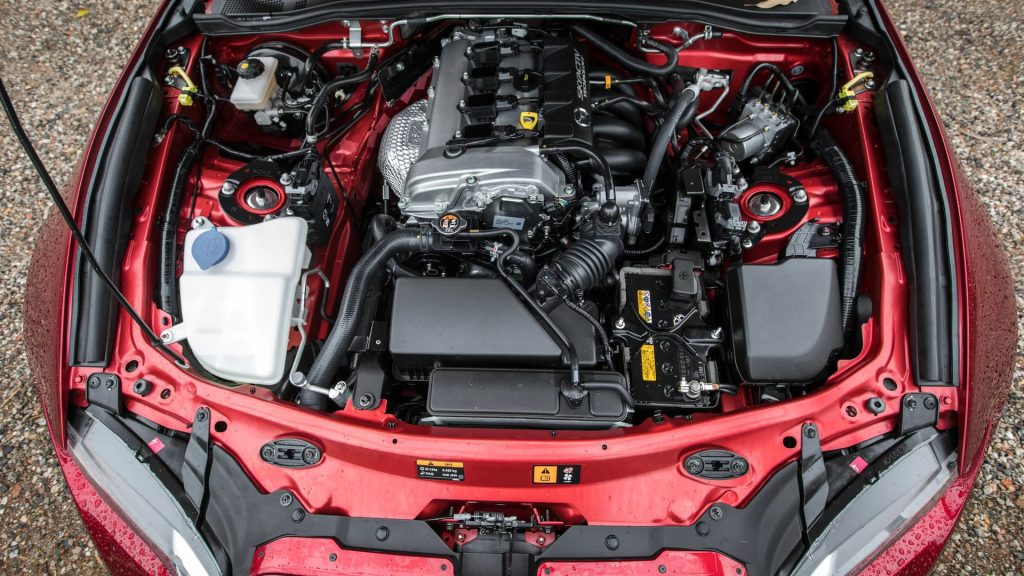
The engine’s linear power delivery is a hallmark of the MX-5’s character. It revs eagerly, encouraging drivers to explore the upper reaches of the rev range. Combined with the crisp shifts of the manual transmission, the engine provides an addictive and rewarding driving experience.
Transmission
The standard option on all Miatas is a 5- or 6-speed manual transmission, renowned for its short, precise throws and engaging feel. This gearbox is a favorite among driving enthusiasts, as it provides a direct and mechanical connection to the car.
The manual transmission features a lightweight design and a low-friction mechanism, contributing to the MX-5’s overall efficiency and performance. The gear ratios are carefully selected to maximize the engine’s powerband, ensuring quick acceleration and responsive performance.
All MX-5 series are also available with automatic transmissions but this option is not available in Europe, therefore, all our Miata are strictly manual. 😉
Steering and Braking
The Mazda MX-5’s steering system is another highlight of its mechanical package. The car features an electric power-assisted rack-and-pinion steering system, tuned to deliver precise and communicative feedback. The steering is light yet direct, making the MX-5 easy to maneuver and confidence-inspiring during spirited driving.
Braking performance is equally impressive. Since the first NA was launched in 1989, all MX-5s are equipped with four-wheel disc brakes, while from 1991 an anti-lock braking system (ABS) was available, first as an option and later as standard. The brakes are designed to provide consistent and reliable stopping power, matching the car’s dynamic capabilities.
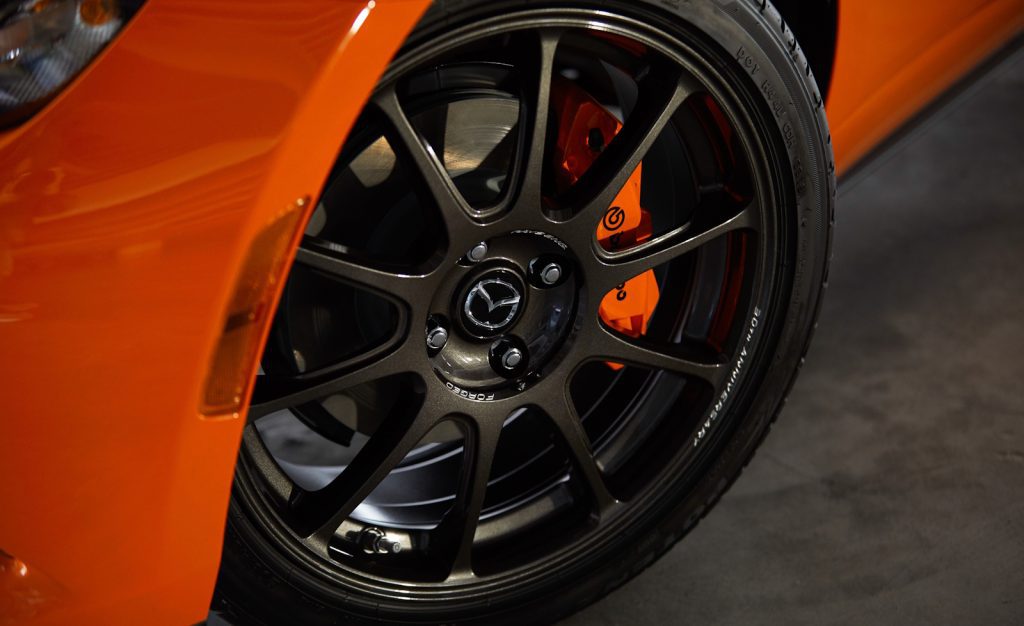
Conclusion
The Mazda MX-5 is a little mechanical marvel that embodies the essence of pure driving enjoyment. From its finely tuned suspension and lightweight chassis to its balanced weight distribution and responsive engine, every component is designed with precision and purpose. The result is a car that feels alive in the hands of its driver, delivering an unparalleled connection to the road.
The MX-5’s engineering showcases Mazda’s dedication to the “less is more” philosophy, proving that you don’t need excessive power or complex technology to create an unforgettable driving experience. In other words, you don’t need to exceed the speed limits to have a lot of fun.


